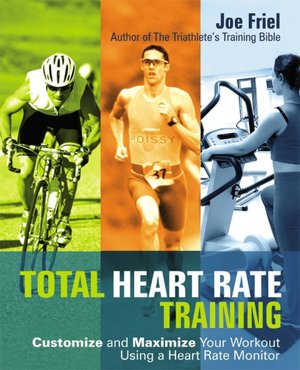I usually try and schedule a test at the end of each recovery week to confirm the Heart Rate Zones I'm using to guide my training. That said, this was the first time in quite a while that I've actually undertaken the protocol. The methodology is relatively simple, but the implementation is anything but.
I've written about this before, but I think it bears repeating. I try to follow the training philosophies laid out by Joe Friel in his many Training Bible books and more recently his book Total Heart Rate Training. Back when I was a cyclist, I used the Cyclist's Training Bible to great success. I can claim a sub 55 minute 40 kilometer time trial and an overall win in a 70 mile road race thanks to the rapid improvements I made while training using his methods.
Today, I'm not as concerned with going fast, nor am I really all that interested in a rigorous structure to my training, but I still believe that proper use of Heart Rate as a guide today is essential to being able to get out and train again tomorrow.
The key to heart rate training is establishing the correct zones. Joe advocates zones based not on maximum heart rate, rather he suggests using lactate threshold. What is "lactate threshold"? From Joe's Blog:
As your body uses carbohydrate to create energy it creates a by-product inside the working muscle cells called lactic acid. As the intensity of a workout increases this liquid begins to seep out of the muscle cell into the surrounding space and blood stream. In so doing it changes its composition by giving off hydrogen ions. It’s now called lactate.The hydrogen ions interfere with the function of the muscles while lactic acid is actually the fuel muscles need to keep going.
The free hydrogen ions lower the pH of your blood and cause the burning sensation felt during intense exercise. If the intensity is increased, they will eventually force you to stop. Lactate threshold then is the point where the decrease in pH is tolerable, and the body is able to neutralize the ions about as fast as they are being produced. Joe says that a well trained athlete can maintain this level of effort for about an hour before becoming exhausted.
Why base training zones on Lactate Threshold instead of Maximum Heart Rate? Everyone feels the same kind of crappy at their lactate threshold whether their pace at lactate threshold corresponds to a 9 minute mile or to a 4 minute 50 second one.
After that bit of dissertation, perhaps you can see where I'm going with my workout. Saturday I set out thinking I'd get in about 5 miles. Joe's methodology for a Lactate Threshold test is simply a 30 minute long time trial: run as hard as you can for 30 minutes, press the lap button 10 minutes into the effort and the average heart rate for the final 20 minutes of the time trial represents your Lactate Threshold.
I warmed up by running a lap of the trails in Cuevas. There we've got 1.2 miles of trail with a couple of moderately challenging hills. I set out thinking that the day was not good for this test and really wondered how it would go. By the end of my warm up, I was feeling no more confident about what was about to go down. I ran the warm up in 13 minutes and 2 seconds.
I left the grounds and headed toward Samaipata. The road up to El Rancho is really pretty flat and therefore ideal for this kind of test. I increased my effort to where I was simultaneously comfortable and uncomfortable. At the end of 10 minutes I punched my lap button: I'd gone 1.5 miles and my average heart rate was 172 with a max (coming less than 30 seconds before the end of the lap) of 177.
I kept going for another 5 minutes toward El Rancho and was really starting to suffer. I kept looking at my watch, "Is it time to turn around yet?" Then once I made the turn, "How much longer is it until I can stop?" Really questioned whether I'd be able to finish out the effort, but somehow I did.
I was 20 seconds per mile slower on this 20 minute lap - I went out too hard, but I was ended up with an average heart rate of 178 for the lap - precisely the number I've been using for the last 6 months (the last time I really laid down an official test).
Anyway. It was tremendous to have the hills of Dissertation Ridge looking down on me while I questioned my sanity: they actually provided just enough distraction to keep me going. Last thought in a long post: while it's been some time since I've actually executed this precise protocol, I have gone out and run a couple of fast 4 mile loops on the last Saturday of a recovery week. I never broke 7 minutes per mile. During this test I ran 4.5something miles in 30 minutes (6:45/mile): Happy.
Thanks for reading and consider that blood's normal pH is actually slightly basic.
J

No comments:
Post a Comment